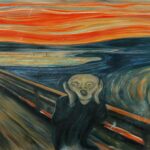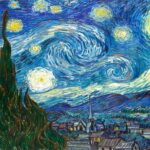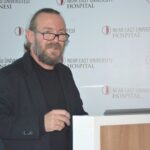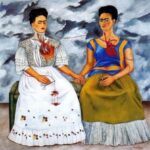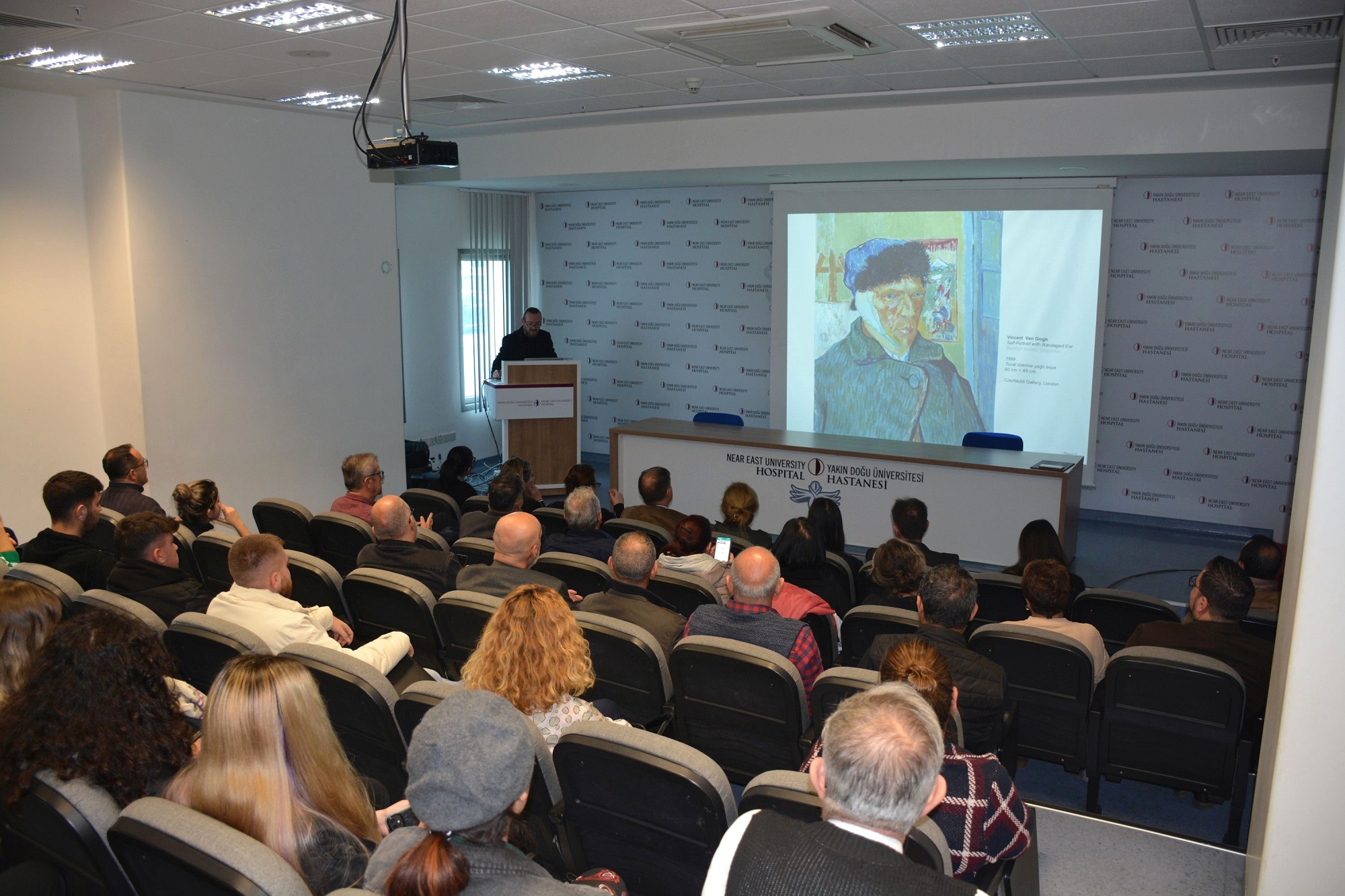
In the first of the “Conference Series” initiated by the Near East University Center of Excellence, Near East University Faculty of Fine Arts and Design Vice Dean and GÜNSEL Art Museum Director Prof. Dr. Erdoğan Ergün discussed “The Effect of Diseases on Artistic Creation”.
The first of the Conference Series, initiated by the Near East University Center of Excellence and where a different topic will be discussed every month, was held at the Near East University Hospital with the subject “The Effect of Diseases on Artistic Creation”. Near East University Faculty of Fine Arts and Design Deputy Dean and GÜNSEL Art Museum Director Prof. Dr. Erdoğan Ergün in his presentation gave examples of how the health problems experienced by world-famous artists such as Frida Kahlo, Edvard Munch, Vincent van Gogh, Arnold Böcklin and Richard Tennant Cooper were reflected in their works.
The conference, which took place with intense participation, was attended by Near East University Rector Prof. Dr. Tamer Şanlıdağ, Dean of Near East University Faculty of Fine Arts and Design Prof. Erdal Aygenç, President of the Near East University Center of Excellence and also Advisor to the Chairman of the Board of Trustees Prof. Dr. Evren Hıncal and many academics, students and participants.
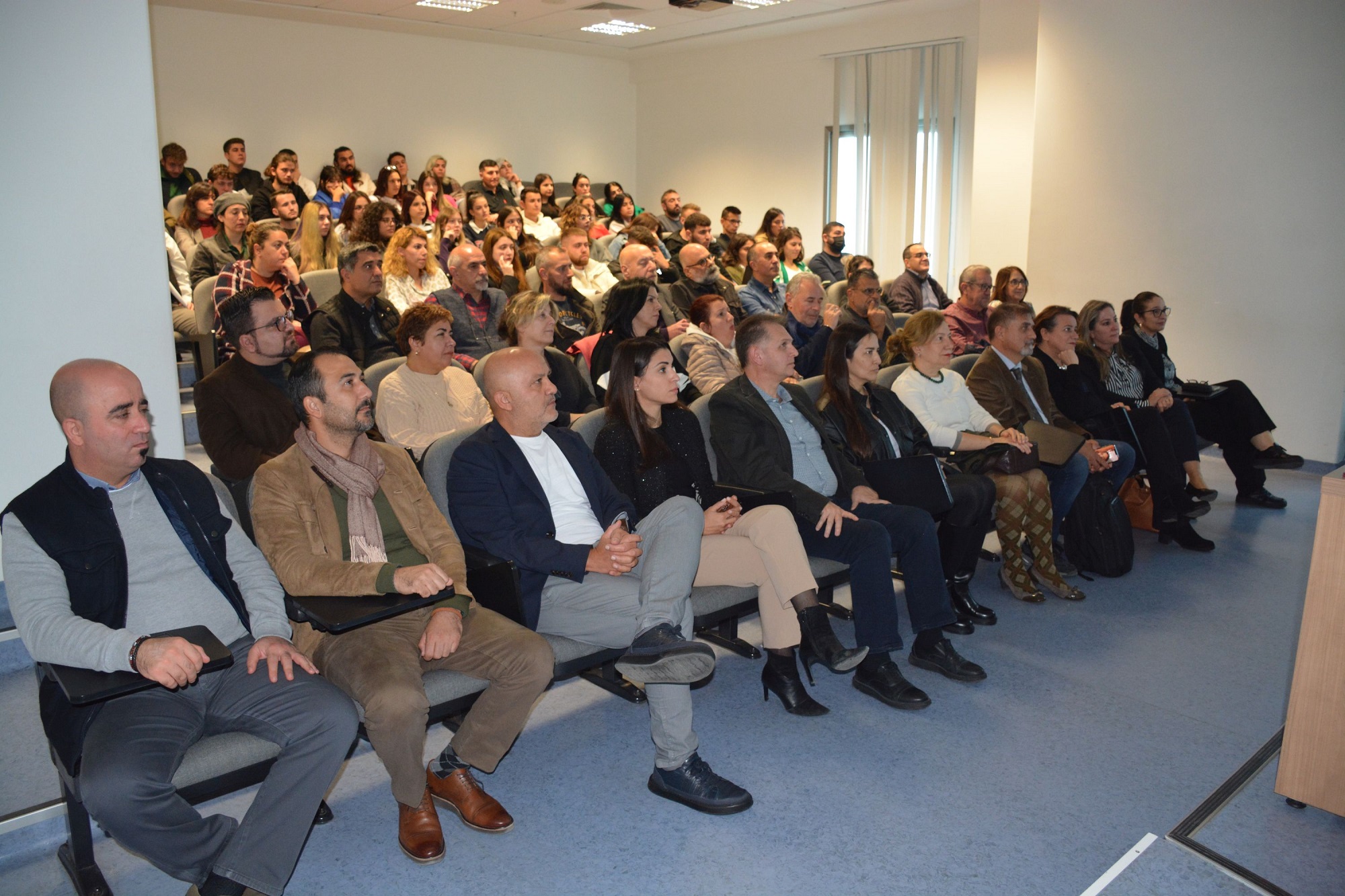
Diseases closely affect artistic production
Stating that diseases closely affect the creative process of artists, Near East University Faculty of Fine Arts and Design Deputy Dean Prof. Dr. Erdoğan Ergün said that many world-famous works that are admired today bear the traces of emotional changes triggered by the health problems experienced by their artists.
Prof. Dr. Ergün says that the psychological reflection of a physical deficiency or inadequacy that occurs in the early period of life affects a person’s creativity. Prof. Dr. Ergün stated that this situation creates a ‘compensation’ mechanism for talented people and strengthens their artistic production. Prof. Dr. Ergün said, “Negativities, illnesses, difficult situations and difficult times often activate creative power. Most artists are very prone to getting sick due to their sensitive and fragile nature and their lives and occupations. Diseases sometimes cause fears and sadness, and sometimes have caused despair, regret and even death. Therefore, these feelings were of course reflected in the artists’ creative processes.”
The illnesses they experienced shaped the works of many names.
“Many important artists have been under the influence of the diseases they have experienced and have created unforgettable works inspired by these difficult experiences,” saying Prof. Dr. Erdoğan Ergün also explained the subject with examples. “Vincent van Gogh reflected his mental distress in his art and left a deep mark on the art world with works such as ‘The Starry Night’. Frida Kahlo, who suffered great physical pain due to polio she suffered at the age of 6 and a traffic accident at the age of 18, tried to cope with her pain and health problems by making colorful portraits. “‘The Two Fridas'” is perhaps her most distinctive work in this respect.” Prof. Dr. Ergünalso said, “These artists, inspired by the difficulties they experienced, created works that moved the audience to deep thoughts, and left their mark by transforming their art into their own inner journeys.”
Stating that the famous painter Edvard Munch was one of those who shaped his art by being influenced by his own inner experiences, Prof. Dr. Erdoğan Ergün said, “One of his most famous works, ‘The Scream’, is a masterpiece that was influenced by Munch’s anxiety and mental distress.” Prof. Dr. Ergün also shared with the participants the statements he wrote in his diary about this work of Munch: “I was walking on the road with my two friends. The sun set and I was overcome by a wave of melancholy. Suddenly the sky turned red. I stopped and leaned against the railing. The flaming sky hung like blood and sword over the blue fjord and city. My friends continued on their way. I just stood there with great anxiety and felt like I was feeling an endless scream in nature.”
Reminding that scientists and clinicians found signs in the works of painters and claimed that these painters were affected by some visual disorders, Prof. Dr. Ergün said, “For example, it has been determined that the pioneers of the impressionism movement were myopic and had vision problems such as hazy or foggy vision and scattering in lights when they were not wearing glasses. It is extremely difficult to verify these speculations. Because artists were extremely free to reflect their own world. However, his is also a fact; The pioneer of the impressionism movement is Claude Monet. And he had cataracts.”
Public conferences will continue
Speaking after the conference, Near East University Rector Prof. Dr. Tamer Şanlıdağ expressed his happiness that the Center of Excellence has carried out studies and research that will create a bond between the university and society. Prof. Dr. Tamer Şanlıdağ said, “These conferences are not only limited to the academic field but aim to present sections from a wide range of life. In this way, information sharing is encouraged among students, faculty and center members, creating the opportunity to benefit from different perspectives.”
Head of Near East University Center of Excellence Prof. Dr. Evren Hıncal emphasized that the conference series they started with “The Effect of Diseases on Artistic Creation” will continue. Prof. Dr. Evren Hıncal said, “Our aim is to raise awareness on different issues and from all areas of life. So, our conferences, which we will continue with different guests and topics every month, will continue to be open to the public.”
